AREA AND PERIMETER WORKSHEET
Problem 1 :
Find the area of the square shown below.
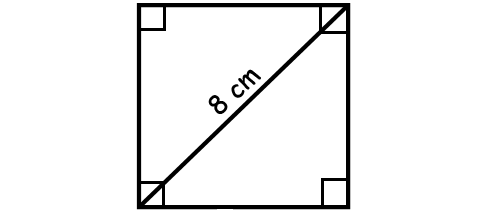
Problem 2 :
Find the perimeter of the rectangle shown below.
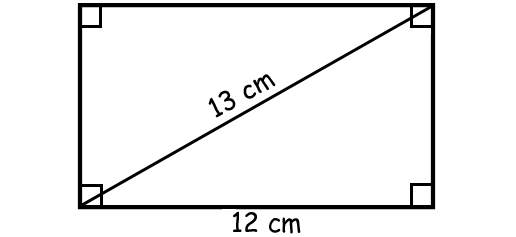
Problem 3 :
Find the area of the quadrilateral shown below.
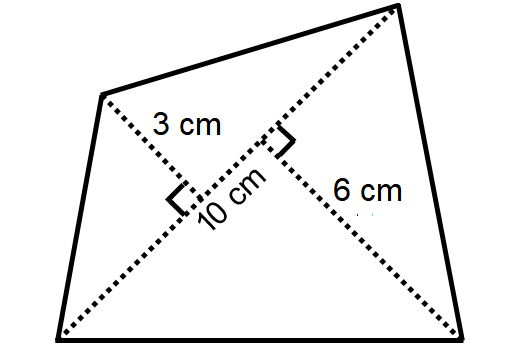
Problem 4 :
Find the area of the parallelogram shown below.
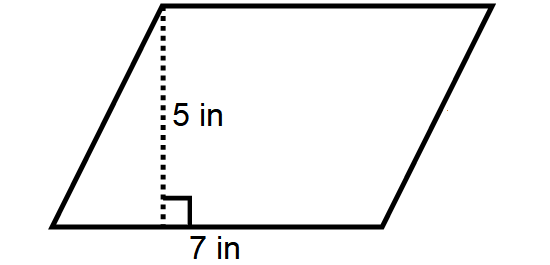
Problem 5 :
The length of each side of the square inscribed into the circle shown below is 4 cm. Find the perimeter of the circle.
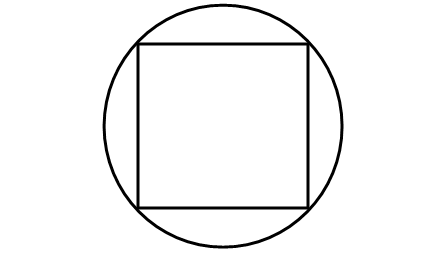
Problem 6 :
Find the area of the figure shown below.
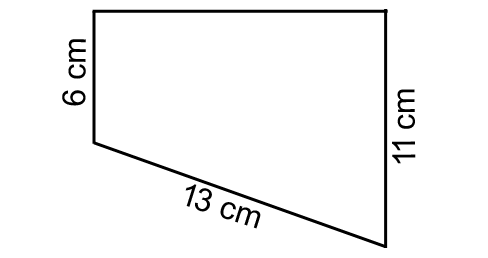
Problem 7 :
A regular pentagon is inscribed in a circle with radius 1 unit. Find the area of the pentagon.
Problem 8 :
Find the area of the regular hexagon shown below.
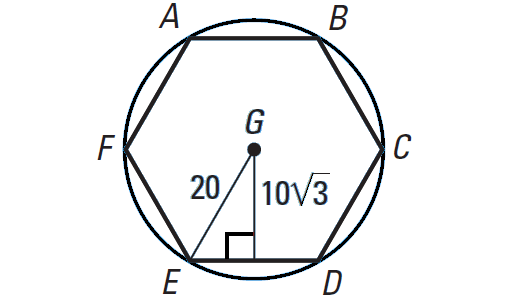

Answers
1. Answer :

In the square shown above, the length of the diagonal is 8 cm.
When the length of a diagonal is given, formula for area of a square :
= 1/2 ⋅ d2
Substitute 8 for d.
= 1/2 ⋅ 82
Simplify.
= 1/2 ⋅ 64
= 32
So, the area of the square shown above is is 32 square cm.
2. Answer :

In the above rectangle, width is 12 cm and the diagonal measures 13 cm.
To find the perimeter of a rectangle, we need to know the length and width.
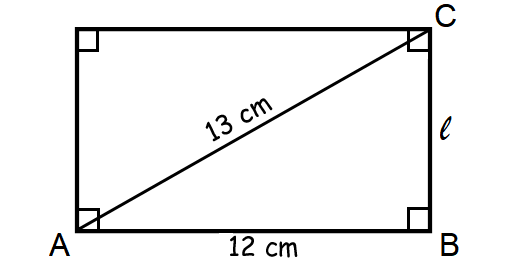
In the figure shown above, consider the right triangle ABC.
By Pythagorean Theorem, we have
AB2 + BC2 = AC2
Substitute.
122 + l2 = 132
Simplify and solve for l.
144 + l2 = 169
Subtract 144 from each side.
l2 = 25
Find positive square root on both sides.
√l2 = √25
l = 5
Therefore, the length of the rectangle is 5 cm.
Formula for perimeter of a rectangle :
= 2(l + w)
Substitute 5 for l and 12 for w.
= 2(5 + 12)
= 2(17)
= 34
So, the perimeter of the rectangle shown above is 34 cm.
3. Answer :

Formula for area of a quadrilateral :
= 1/2 ⋅ d ⋅ (h1 + h2)
Substitute 3 for h1 and 6 for h2 and 10 for d.
= 1/2 ⋅ 10 ⋅ (3 + 6)
= 1/2 ⋅ 10 ⋅ 9
= 45
So, the area of the quadrilateral shown above is 45 square cm.
4. Answer :

Formula for area of a parallelogram :
= b ⋅ h
Substitute 7 for h and 5 for b.
= 7 ⋅ 5
= 35
So, the area of the quadrilateral shown above is 35 square inches.
5. Answer :

To find the perimeter of the circle, we need to know its radius.
Let us find the radius of the circle.
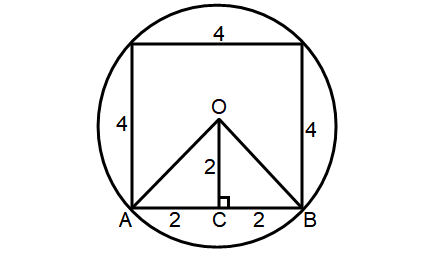
In the figure shown above, consider the right triangle OBC.
By Pythagorean Theorem, we have
OB2 = OC2 + CB2
Substitute.
OB2 = 22 + 22
Simplify and solve for OB.
OB2 = 4 + 4
OB2 = 8
Find positive square root on both sides.
√OB2 = √8
OB = 2√2
Therefore, the radius of the circle is 2√2 cm.
Formula for perimeter of a circle is
= 2πr
Substitute 2√2 for r.
= 2π(2√2)
= 4√2π cm
So, the perimeter of the circle shown above is 4√2π cm.
6. Answer :

We can find the area of the figure shown above by dividing the figure into rectangle and triangle as shown below.
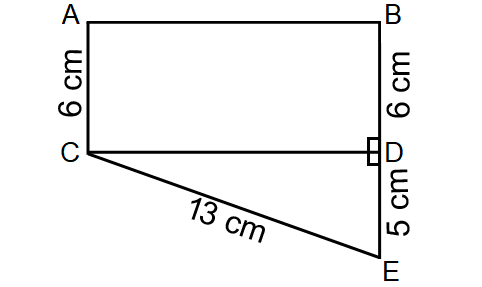
In the figure shown above, consider the right triangle CDE.
By Pythagorean Theorem, we have
CD2 + DE2 = CE2
Substitute.
CD2 + 52 = 132
Simplify and solve for CD.
CD2 + 25 = 169
Subtract 25 from each side.
CD2 = 144
Find positive square root on both sides.
√CD2 = √144
CD = 12
Therefore, the width of the rectangle is 12 cm.
And also, the base of the triangle is 12 cm.
Area of the rectangle ABCD :
Area = l ⋅ w
Substitute 6 for l and 12 for w.
Area = 6 ⋅ 12
Area = 72 cm2
Area of the triangle CDE :
Area = 1/2 ⋅ b ⋅ h
Substitute 12 for b and 5 for h.
Area = 1/2 ⋅ 12 ⋅ 5
Area = 30 cm2
Area of the complete figure :
= Area of the rectangle ABCD + Area of the triangle CDE
= 72 + 30
= 102 cm2
So, the area of the figure shown above is 102 square cm.
7. Answer :
Draw a sketch.
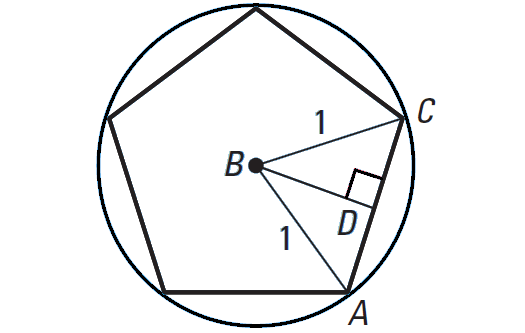
To apply formula for the area of a regular pentagon, we must find its apothem and perimeter.
The measure of central ∠ABC is
= 1/5 ⋅ 360°
= 72°
Let us consider the isosceles triangle ΔABC in the above regular pentagon.
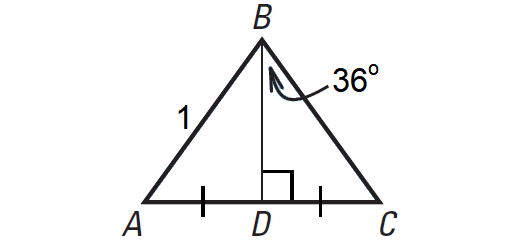
The altitude to base AC also bisects ∠ABC and side AC. The measure of ∠DBC, then, is 36°.
In right ΔDBC, we can use trigonometric ratios to find the lengths of the legs.
|
cos 36° = BD/BC cos 36° = BD/1 cos 36° = BD |
sin 36° = DC/BC sin 36° = DC/1 sin 36° = DC |
So, the pentagon has an apothem of
a = BD = cos 36°
and a perimeter of
P = 5(AC)
P = 5(2 ⋅ DC)
P = 10(DC)
P = 10 ⋅ sin 36°
The area of the pentagon is
A = 1/2 ⋅ apothem ⋅ perimeter of polygon
Substitute.
A = 1/2 ⋅ cos 36° ⋅ 10 ⋅ sin 36°
Simplify.
A = 5 ⋅ cos 36° ⋅ sin 36°
A ≈ 2.38 square units
8. Answer :

To apply formula for the area of a regular hexagon, we must be knowing the apothem and perimeter.
Apothem is already given and we have to find the side length (ED) of the polygon to find its perimeter.
Let us consider the isosceles triangle ΔGED in the above regular pentagon.
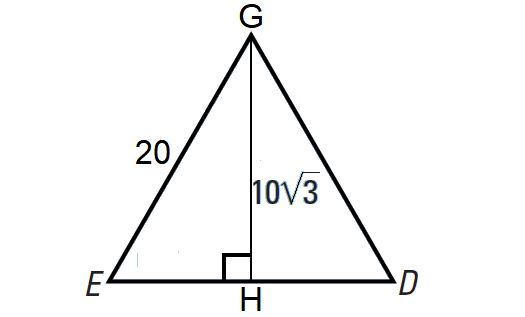
Because ΔGED is isosceles, the altitude GH to base ED bisects the side ED.
In right ΔEGH, we can use Pythagorean Theorem to find the length of EH.
EH2 + GH2 = EG2
Substitute.
EH2 + (10√3)2 = 202
EH2 + 300 = 400
Subtract 300 from each side.
EH2 = 100
Take square root on each side.
EH = 10
So, the hexagon has the perimeter of
P = 6(ED)
P = 6(2 ⋅ EH)
P = 6(2 ⋅ 10)
P = 6(20)
P = 120
The area of the hexagon is
A = 1/2 ⋅ apothem ⋅ perimeter of polygon
Substitute.
A = 1/2 ⋅ 10√3 ⋅ 120
Simplify.
A = 600√3 square units
Practice Questions
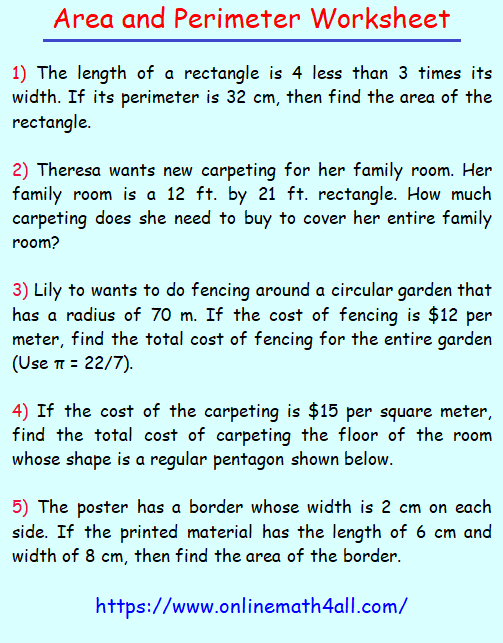
Click here to get detailed answers for the above questions.
Kindly mail your feedback to v4formath@gmail.com
We always appreciate your feedback.
©All rights reserved. onlinemath4all.com
Recent Articles
-
Digital SAT Math Problems and Solutions (Part - 146)
Apr 18, 25 06:52 AM
Digital SAT Math Problems and Solutions (Part - 146) -
Logarithmic Derivative Problems and Solutions
Apr 16, 25 09:25 PM
Logarithmic Derivative Problems and Solutions -
Digital SAT Math Problems and Solutions (Part - 145)
Apr 16, 25 12:35 PM
Digital SAT Math Problems and Solutions (Part - 145)

